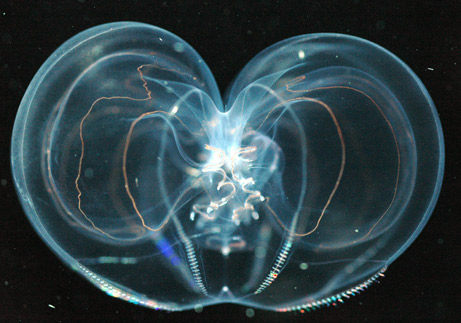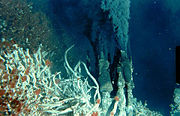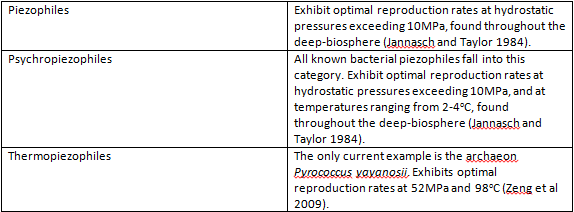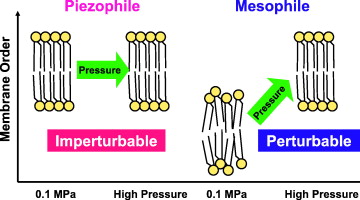Piezophile
The Barophilie (Greek βαροφιλία ) means preference for pressure. Derived from the adjective is barophil. An alternative name is Piezophilie or piezo phil.
Barophilic organisms have adapted during evolution to high water pressures, such as those found in the deep sea.
The term was introduced in 1949 by Claude E. ZoBell ( 1904-1989 ) and Frank H. Johnson ( 1908-1990 ), finally discovered Zobell and Richard Y. Morita 1957 barophilic microorganisms from sediments at great depth.
Optional barophilic bacteria can grow better under high pressures. So Spirillum sp has. a generation time of 4-13 hours at about 500 bar and 2 ° C. At 1 bar, however, the generation time increased to 72-96 hours. Optional barophilic bacteria as well Thermococcus barophilus can also detect changes in pressure and respond with a subsequent cellular response. Obligate barophilic bacteria require high pressures to grow, such as Shewanella benthica. This was of 11,000 meters have been found at a depth of approximately 800 bar and needs to grow.
Barophilic organisms must be able to tolerate either low temperatures that prevail at such depths ( psychrophilic ) or they live near volcanically active regions and have a temperature optimum at 85 ° C. They are therefore hyperthermophilic.
Barophilic organisms are often archaea, which belong to the group of extremophile organisms. It was also Gram- negative eubacteria at a depth of 2,500 meters found that can tolerate the prevailing pressures.










